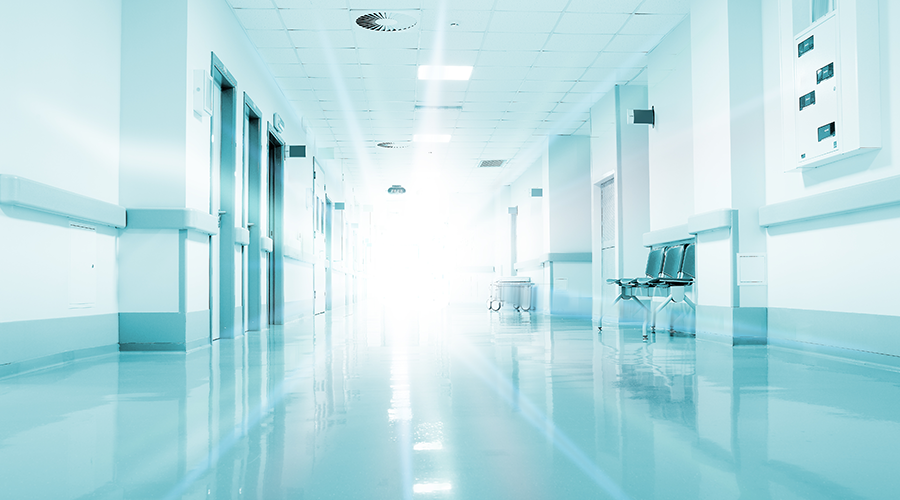The design of the recently completed Miami Center for Mental Health and Recovery by SBLM Architects includes key criteria mandated in the Baker Act -- such as hospital emergency intake centers and emergency vehicle access -- while providing multiple environments conducive to the treatment and recovery of persons with mental illness. Most importantly, the Center offers a viable and cost-efficient alternative to incarcerating a population that has proven to be responsive to clinical treatment. It also addresses options for a significant portion of the homeless population in Miami.
The Baker Act of 1971, aka the Florida Mental Health Act, allows for the temporary detention of individuals for mental health examinations, for up to 72 hours on a voluntary or involuntary basis. To address the law’s requirements, the Center’s design includes dedicated intake-and-receiving areas and a special sallyport entry for emergency vehicles. Access to the facility is additionally facilitated at grade level with such features as separate waiting rooms for incoming-and-outgoing patients, four assessment and examination rooms, and a secure corridor to a Crisis Stabilization unit.
The seven-story facility, located at 22nd Street and Northwest Seventh Avenue, is an adaptive reuse of a 180,000-square-foot property owned by the state and leased to Miami-Dade County. The goal of this 208-bed facility is to divert people with mental illnesses from the criminal justice system, while facilitating recovery and transitioning them to permanent housing. Conceived by Judge Steven Leifman, Associate Administrative Judge in the criminal division of the 11th Circuit Court of Florida, the SBLM design supports the original intent, literally, floor by floor.
Adding to the Center’s functionality is the inclusion of a first-floor Hearing Room with judge and magistrate chambers for related hearings and legal proceedings.
With the ground-floor consigned to intake, assessment and legal procedures, the second floor offers a separate and secure Crisis Stabilization Unit with 16 beds, Outpatient Medical Clinics, two separate office suites with 15 offices for support services, a conference center set up for professional and educational training – including law enforcement training for this special population -- and a peer-supervised “respite area” for persons who do not meet the Center’s crisis criteria but have nowhere else to go.
Also on the expansive second floor is a secure wing for the residents that includes a gymnasium, multi-purpose day rooms, visitation areas and access to a 33,000-square-foot secure, outdoor recreation area with landscaping, seating, walking path, planting areas and basketball court in a parklike setting.
On the third floor is a dedicated mechanical equipment area that also provides a physical and acoustical buffer from the resident sleeping areas, which are located on the fourth through seventh floors.
Further distinguishing the innovative design of the Miami Center for Mental Health and Recovery is the flexibility of the separate care or sleep pods, with each floor having six eight-bed pods, which allows for organization of patient care. Moreover, a maximum of five beds may be assigned to each of the private bathrooms on resident floors, reinforcing privacy and personal dignity.
Centrally located nursing stations are situated on the resident floors at each three-pod area to provide supervisory support. In addition, resident floors have dedicated support areas consisting of a pharmacy, examination room, professional therapy offices, laundry, and dining room. As a resident’s condition stabilizes, there can be relocations to higher floors that provide increasingly independent living opportunities.
At a cost of approximately $51 million to build, it is estimated that Miami-Dade County will save millions of dollars each year by providing a comprehensive treatment program for this population currently being held in county detention facilities.

 UF Health Hospitals Rely on Green Globes to Realize Their Full Potential
UF Health Hospitals Rely on Green Globes to Realize Their Full Potential How Healthcare Facilities Can Be Truly Disaster-Resilient
How Healthcare Facilities Can Be Truly Disaster-Resilient TriasMD Breaks Ground on DISC Surgery Center for San Fernando Valley
TriasMD Breaks Ground on DISC Surgery Center for San Fernando Valley Bigfork Valley Hospital Falls Victim to Data Breach
Bigfork Valley Hospital Falls Victim to Data Breach AI-Driven Facilities: Strategic Planning and Cost Management
AI-Driven Facilities: Strategic Planning and Cost Management